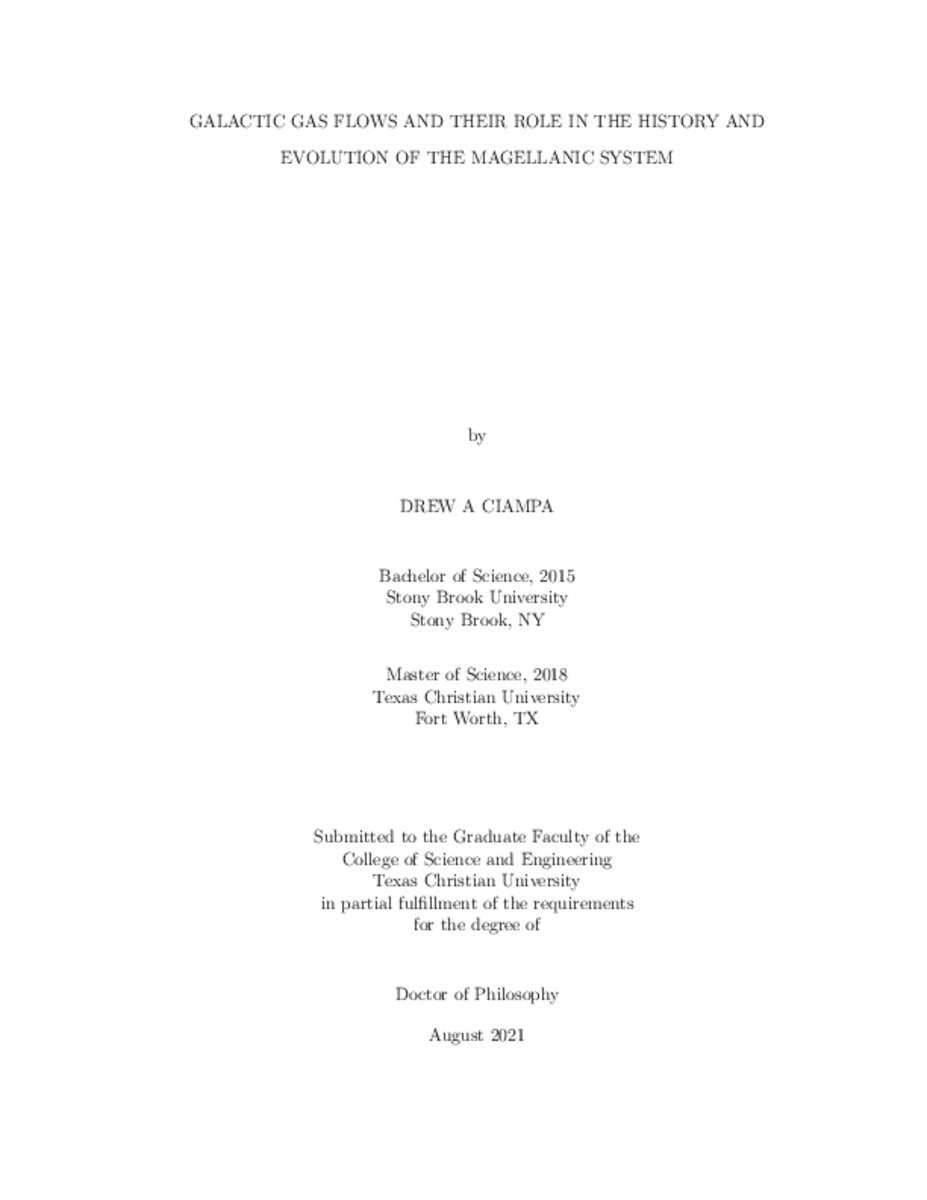Galactic Gas Flows and their Role in the History and Evolution of the Magellanic SystemShow full item record
| Title | Galactic Gas Flows and their Role in the History and Evolution of the Magellanic System |
|---|---|
| Author | Ciampa, Drew Austen |
| Date | 7/28/2021 |
| Genre | Dissertation |
| Degree | Doctor of Philosophy |
| Abstract | Within our Galactic backyard, the Magellanic System, composed of the Large and Small Magellanic Clouds, is exchanging millions to billions of solar masses worth of material to the Milky Way. In two different studies, we explored this exchange and its impact on the Galactic environment. In the first study, a galactic outflow has erupted due to supernovae explosions within the disk. We present the first spectroscopically resolved H-alpha emission map of this wind. Kinematically, we find that the diffuse gas in the warm-ionized phase of the wind persists at both low (<100km/s) and high (>100km/s) velocities, relative to the LMC's HI disk. Furthermore, we find that the high-velocity component spatially aligns with the most intense star-forming region, 30~Doradus. We, therefore, conclude that this high-velocity material traces an active outflow. This wind is ejecting an estimated log(Mionized/Mo)=7.51 +/- 0.15 worth of material off the near-side of the galaxy. The second study observes tidally stripped gas that leads the LMC's orbit. This material formed into a massive complex called the Leading Arm that contains multiple sub-structures of gas. We investigate the physical and ionization conditions of this structure using Hubble Space Telescope/Cosmic Origins Spectrograph UV absorption-line and 21\,cm \hi\ emission-line observations along 13 sightlines. Additionally, we use Cloudy radiative transfer modeling to estimate their average temperatures, densities, ionization fractions, and thermal pressures. We find that most Leading Arm sub-structures exhibit multiple absorbers along their lines of sight, indicating a complex three-dimensional structure. Using the ionization fractions, we estimate that the total (neutral plus ionized) hydrogen mass of the LA sub-structures is M_H=3.0x10^8 Mo across a velocity range of +100 < vLSR < +240 km/s. In both studies, the material at play has the potential to fall onto the Milky Way and produce the future generation of solar systems. |
| Link | https://repository.tcu.edu/handle/116099117/48050 |
| Department | Physics and Astronomy |
| Advisor | Barger, Kat |
Files in this item
This item appears in the following Collection(s)
- Doctoral Dissertations [1526]
© TCU Library 2015 | Contact Special Collections |
HTML Sitemap



